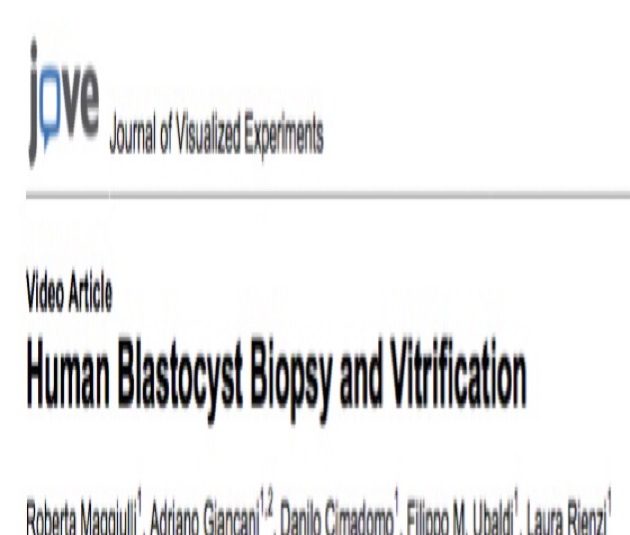
Human Blastocyst Biopsy and Vitrification
Maggiulli R., Giancani A., Cimadomo D., Ubaldi F.M, Rienzi L.
Journal of Visualized Experiments 2019 Jul 26;(149). doi: 10.3791/59625.
Abstract
Blastocyst biopsy is performed to obtain a reliable genetic diagnosis during IVF cycles with preimplantation genetic testing. Then, the ideal workflow entails a safe and efficient vitrification protocol, due to the turnaround time of the diagnostic techniques and to transfer the selected embryo(s) on a physiological endometrium in a following natural cycle. A biopsy approach encompassing the sequential opening of the zona pellucida and retrieval of 5-10 trophectoderm cells (ideally 7-8) limits both the number of manipulations required and the exposure of the embryo to sub-optimal environmental conditions. After proper training, the technique was reproducible across different operators in terms of timing of biopsy (~8 min, ranging 3-22 min based on the number of embryos to biopsy per dish), conclusive diagnoses obtained (~97.5%) and live birth rates after vitrified-warmed euploid blastocyst transfer (>40%). The survival rate after biopsy, vitrification and warming was as high as 99.8%. The re-expansion rate at 1.5 h from warming was as high as 97%, largely dependent on the timing between biopsy and vitrification (ideally ≤30 min), blastocyst morphological quality and day of biopsy. In general, it is better to vitrify a collapsed blastocyst; therefore, in non-PGT cycles, laser-assisted artificial shrinkage might be performed to induce embryo collapse prior to cryopreservation. The most promising future perspective is the non-invasive analysis of the IVF culture media after blastocyst culture as a putative source of embryonic DNA. However, this potential avant-garde is still under investigation and a reliable protocol yet needs to be defined and validated.